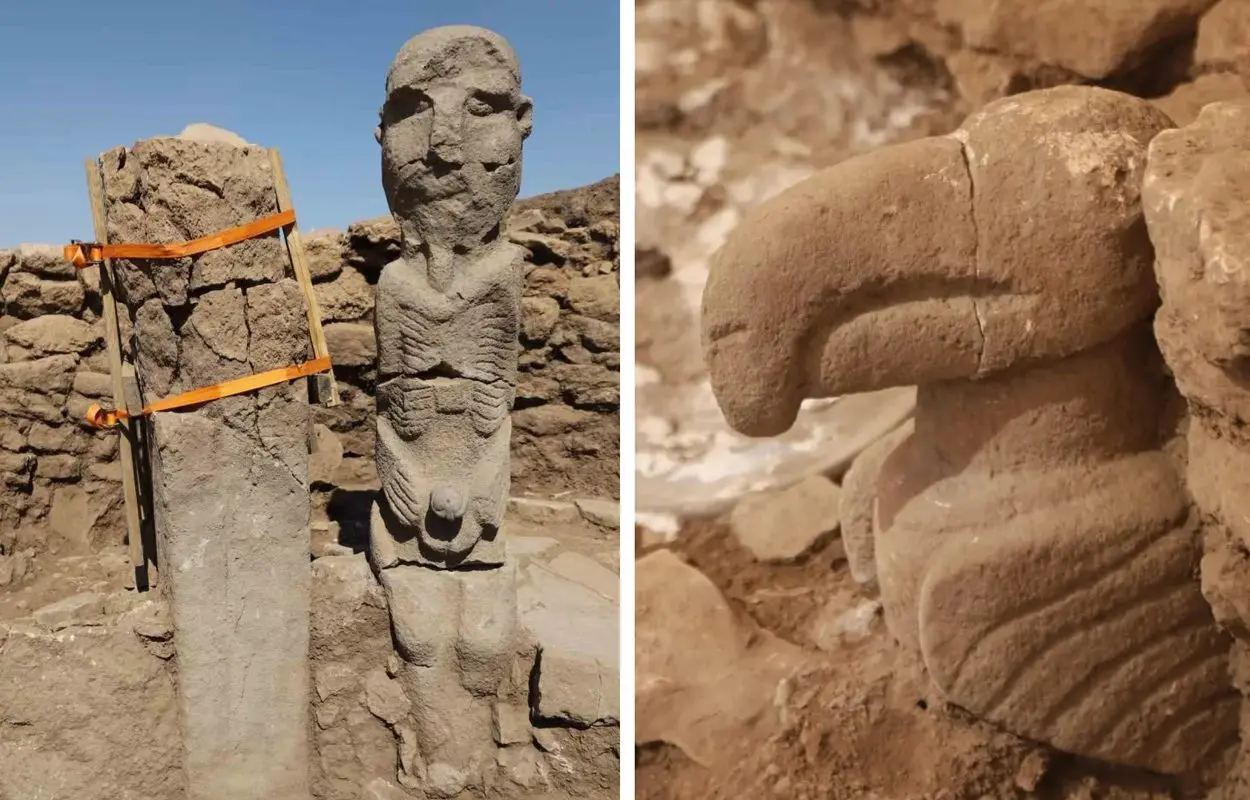According to a press announcement by the Turkish Ministry of Culture and Tourism, archaeologists excavating at Göbeklitepe and Karahantepe have uncovered several new monumental statues and architectural elements.
Göbekli Tepe is an ancient ritual complex in the Anatolia Region of Turkey, believed to be the oldest known Mesolithic temple.
The main structures identified have been dated to the Pre-Pottery Neolithic A (PPNA) from around the 10th millennium BC, with further remains of smaller buildings from the Pre-Pottery Neolithic B (PPNB), dated to the 9th millennium BC.
Around 40 km’s away is the site of Karahan Tepe, another ritualistic complex corresponding with the Pre-Pottery Neolithic. Karahan Tepe has similar architectural elements to the Göbekli Tepe II layer, such as 266 pillars with matching T-shaped features.
Recent excavations, which are part of the “Stone Hills Project” (“Taş Tepeler Projesi”), have uncovered new architectural elements and monumental statues, with the most notable being a painted boar statue at Göbeklitepe decorated with red, white, and black pigment.
According to the researchers, the boar statue is one of the oldest known painted statues from the Mesolithic period, which was located on a stone bench decorated with a “H shaped symbol, a crescent, two snakes, and depictions of human faces.
At Karahan Tepe, the team found a 2.3 metre tall statue, described as “one of the most impressive exampls of prehistoric art”. The statue was found fixed in a seated position on a stone bench and is shown holding a phallus in both hands.
Excavations in the vicinity also uncovered a bird statue clearly showing the beak, eyes, and wings, which the team suggest depicts a vulture. Previous excavations have found other animal reliefs depicting: snakes, insects, birds, the head and forelegs of a rabbit, the hind legs and tail of a gazelle, and the hind legs of an unidentified animal.
Turkish Ministry of Culture and Tourism
Header Image Credit : Turkish Ministry of Culture and Tourism





